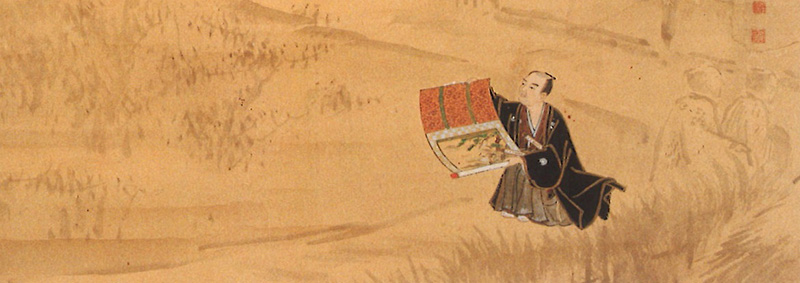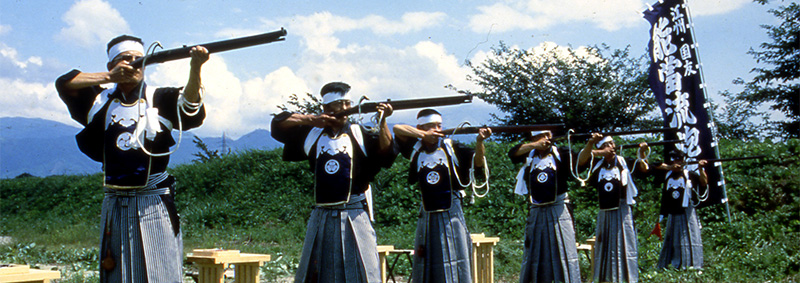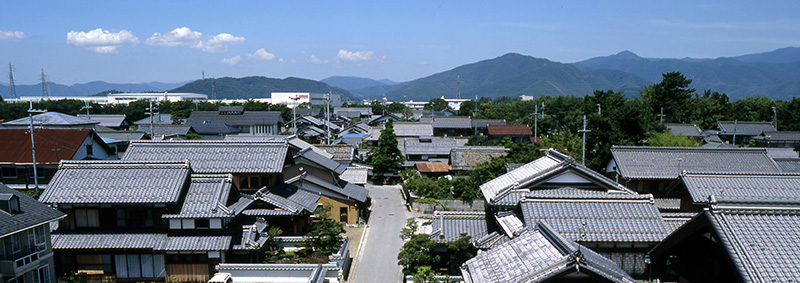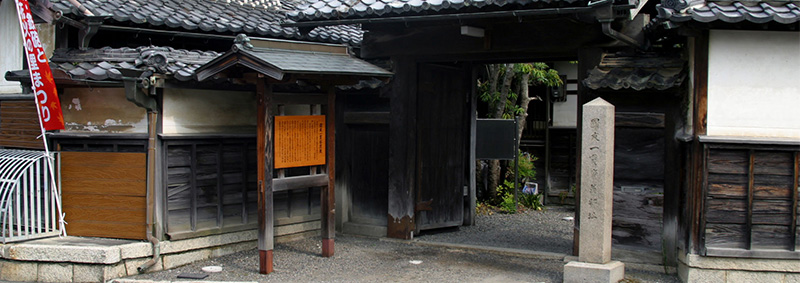STORYIKKANSAI KUNITOMO
Ikkansai Kunitomo’s Upbringing
 A portion of Yumetakazu featuring Ikkansai.
A portion of Yumetakazu featuring Ikkansai.
(Kunitomo Ikkansai Document Index)-
Ikkansai Kunitomo was born on Octobor 3rd 1778 in Kunitomo Village in Sakata-Gun of Ohmi Province (modern day Kunitomo-town in Nagahama City, Shiga Prefecture). His childhood name was Toichi but after taking over the family name at 9 years old in 1786 he took the name Toube. For personal use he also used Ikkansai, Minryu, and Yoshimasa as pen names. He etched many of these aliases into his various inventions and knick knacks.
Atsutane Hirata, who taught Ikkansai many things about science and technology, gave him the nickname Yoshimasa (能当). This comes from the Japanese “能く当たる” meaning to “hit well” in reference to a matchlock bullet. Ikkansai’s real name was Jyukyo and he often signed his letters as such.
Ikkansai made many achievements in science and technology. This is an introduction focused on his work with matchlocks and air guns, reflecting telescopes and his observations of space.
Ikkansai the Blacksmith
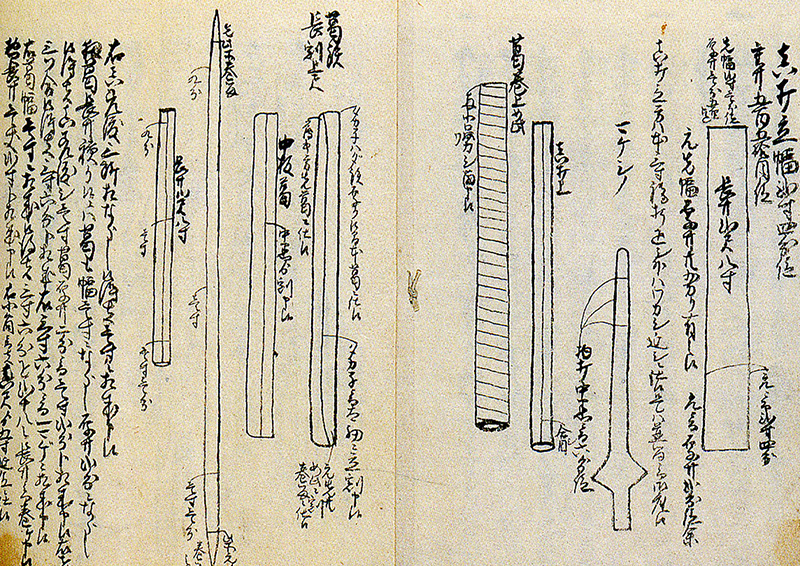 Daishou onteppo haritate seisaku
Daishou onteppo haritate seisaku-
Traditionally the techniques involved with making matchlocks was kept confidential, only passing from master to apprentice. Every apprentice was sworn to keep everything they learned to secrecy. However the one who broke this tradition was Ikkansai. In 1818 Sadanobu Matsudaira, a former roju (elder of the Tokugawa Shogunate) commissioned Ikkansai to write a book(daishouonteppouharitateseisaku) detailing the process involved with manufacturing matchlocks. At the end of the 18th century Russian ships were seen in Japanese coastal waters and their interest in commerce and multiple small scale conflicts concerned Matsudaira. Matsudaira thought that in order to protect Japan that it was absolutely essential to increase the amount of firearms produced nationwide. To make mass production possible Matsudaira demanded that the secrets of firearm production be disclosed.
Ikkansai wrote the manual instructing how to build firearms. With the information outlined in this book anyone with blacksmithing knowledge could even construct something as difficult as a cannon. The manufacture of firearms was passed down from generation to generation however there was no standardization. It is possible to say that because of this manual uniformity was achieved. Ikkansai was not only a technical expert but also a great writer and an excellent artist. Because of the abounding skills he possessed he was able to write such a document. Ikkansai presented this manual to Sadanobu Matsudaira who in turn presented it to the Feudal Lord Maeda of Kanazawa the next year.
Manufacture of the Airgun
-
Ikkansai was the first person in Japan to build an airgun. In 1814 an eye doctor working for the Zeze Clan, Daien Yamada heard an account of a Dutch airgun. Shortly thereafter he had constructed a mock up of this airgun. On October 5th, 1818 Ikkansai, who was in Edo at the time, was shown the actual Dutch airgun by Daien Yamada. Daien Yamada had borrowed the airgun from the feudal lord of Tangomineyama, Takamasa Kyogoku, because the airgun was in pieces and neglected as there were no craftsmen capable of fixing it.
Ikkansai was commissioned on the spot to restore the airgun which he did over a short period of time. While working he recorded and sketched out the designs of the airgun but wasn’t satisfied with the performance and thought that he could create a better design.
-
On November 1st, Ikkansai started work on his original design and gave Takamasa Kyogoku the finished product on March 9th the following year. He also included a instruction manual showing how to use his air rifle. At first it appears he planned on making the air rifle with a caliber of 3.5 monme but ultimately the rifle he gave had a caliber of 1.5 monme (about 1.1 centimeters).
On May 24th 1819, Ikkansai gave a demonstration of his new firearm to the feudal lord of Wakasa Obama and roju, Tadayuki Sakai. There is an illustration of this event in the Ikkansai Archives. On the following day Ikkansai gave a demonstration to the fuedal lord of Mino Iwamura and roju, Noriyasu Matsudaira.
The Airgun and Its Principal Theory
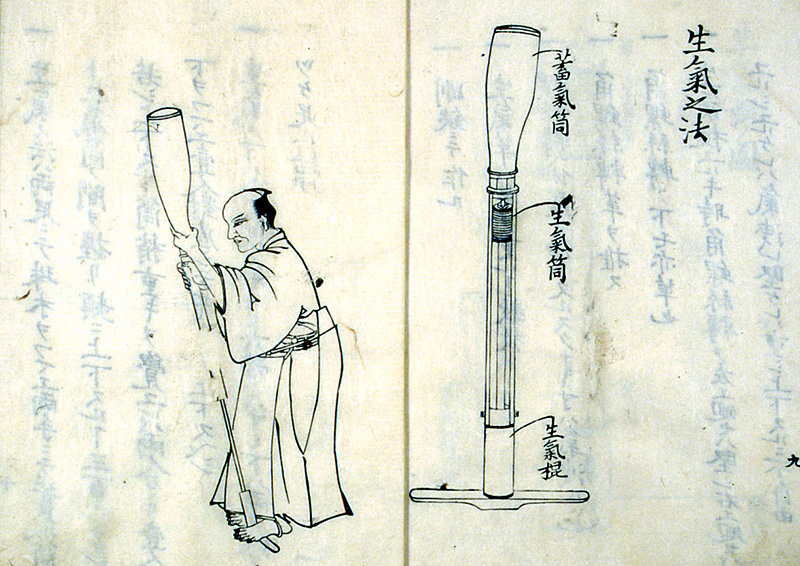 Illustration Showing Operation of Ki houki
Illustration Showing Operation of Ki houki
(Seiki no hou)-
Orders for the airgun started to come in from many of Japan’s top ranking leaders. The earliest to place orders were Echizen Katsuyama’s Feudal Lord Nagataka Ogasawara, Ise Kuwana’s Feudal Lord Tadataka Matsudaira, Mito’s Feudal Lord Narinobu Tokugawa, former Roju(Chief Councilor) Sadanobu Matsudaira, the feudal domain of Harima Himeji, the feudal domain of Isetsu, the feudal domain of Omi Minakuchi, and Bungo Oka’s feudal lord Hisanori Nakagawa. It is known that the Kuwana feudal domain payed 35 ryo at the delivery of the airguns.
At that time, airguns where known as 「fuu hou 風砲」wind rifles. In the beginning of his research Ikkansai also used the term fuu hou in his writings. However, he realized that theoretically it wasn’t wind but rather compressed air being used to fire the rifle so the term 「ki hou 気砲」atmosphere rifle would be a better fit and started using ki hou in his writings.
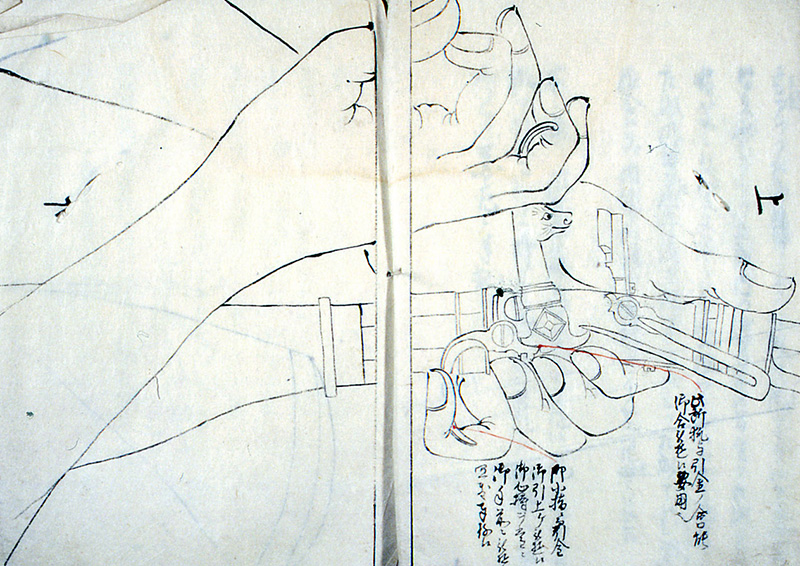 Ki hou benki
Ki hou benki
(Kunitomo Ikkansai Document Index)-
In 1834, using the air rifle he delivered to Uneme Sasaki, Ikkansai measured the weight of air. With 100 pumps the rifle weighed 6 monme, with 500 pumps the rifle weighed 24.5 monme and with an extra 75 pumps weighed 23.5 monme. He wrote that firing one bullet used 11.5 monme leaving 12 monme remaining. Ikkansai was the first Japanese person to realize that air has weight. He deserves a special mention in relation to Japanese science and technology history.
Ikkansai’s ki hou had a large impact on Japanese science and technology. After the development of the air rifle in 1824, Michikata Kume of Sanukinokuni (modern day Kagawa Prefecture) made his own air rifle. Sukaji Okamura a metalsmith of Zeze was also influenced by Ikkansai and made an air rifle. Also, Hisashige Tanaka’s Mujintou(unextinguishible lamp) and Sugaji Okumura’s Karakuri Funsuiki (sake cup washing fountain) applied the same principal of pressurized air found in Ikkansai’s air rifle.
Manufacturing the Reflecting Telescope
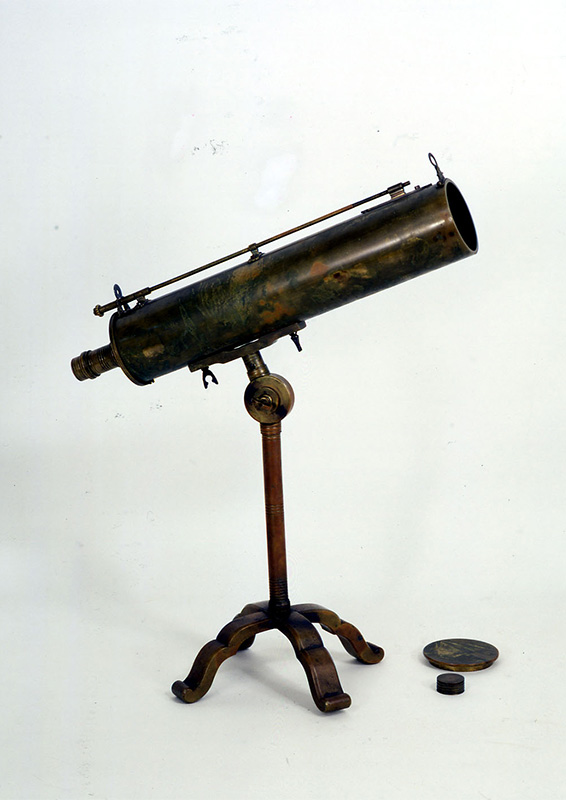 Ikkansai’s Reflecting Telescope
Ikkansai’s Reflecting Telescope
(Nagahama City Nagahama Castle Historical Museum)-
On June 20th, 1832 after returning home from Owarinokuni, Ikkansai started work on his reflecting telescope. Zenbe Iwahashi of Kaizuka Izuminokuni had completed work on a refracting telescope and made astronomical observations in 1793. In 1796, Koukan Shiba published the Oranda Tensetsu introducing the sun centered theory of the galaxy. At that time intellectuals interest in space was at a peak. It is thought that Koukan Shiba, while in Edo, acquired his knowledge of heavenly bodies from Atsutane Hirata’s group of pupils. In particular, the dutch made telescope Telesukofu Omegane in the estate of Masanaga Naruse, the feudal lord of Owari Inuyama, served as a great encouragement to him. Making this telescope as well as a Gregorian Reflecting Telescope where longstanding desires of his.
Ikkansai mostly finished his reflecting telescope by 1833. Unlike the refracting telescope made by Zenbe Iwahashi the reflecting telescope made by Ikkansai was the first in Japan to make use of mirrors. He continued to build these reflecting telescopes until 1836. Four of these are still in existence.
What Ikkansai had the most difficulty with while constructing the telescope was first the casting of the reflector, second the polishing of the mirrors and third the polishing of the glass lenses. According to information handed down Ikkansai was gradually improving the telescope while studying the stars. The result of this was the production of a mirror that he predicted wouldn’t get foggy after 100 years. Through polishing he was able to successfully shape a parabolic reflector. During his observations of the sun he developed glass purpose made for looking at the sun. Ikkansai’s telescope had a large impact on the astronomy section of the Shogunate as well as amazing Osaka’s private astronomer Hazamashigeyoshi with how, compared to the Dutch telescope, Ikkansai’s telescope had less haze and stars appeared to be double in size.
Ikkansai’s Astronomical Observations
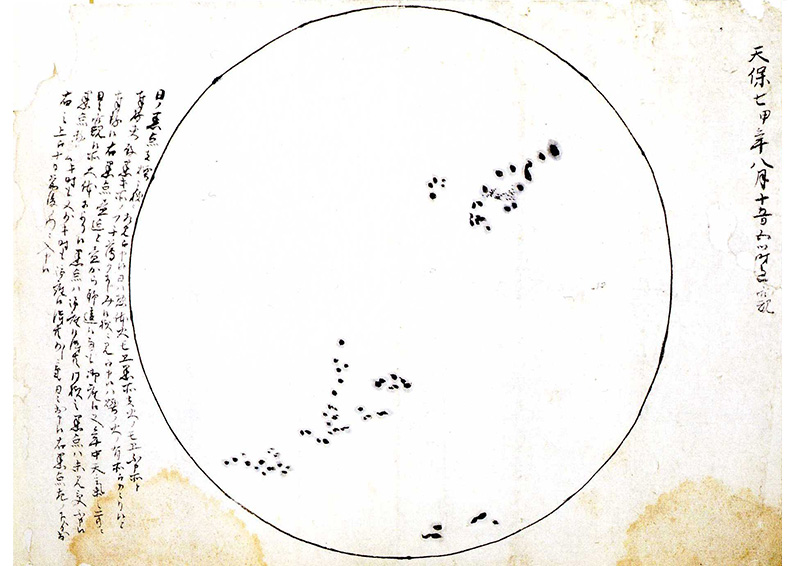 Ikkansai’s Observation of Sunspots
Ikkansai’s Observation of Sunspots
(Kunitomo Ikkansai Document Index)-
Ikkansai simultaneously observed the stars and built his telescope. His first observation was made on October 11th, 1833 and he sketched the moon and Jupiter noticing the craters on the moon and two of Jupiter’s moons. Ikkansai was the first person in Japan to observe sunspots. From January 6th, 1835 to February 8th, 1836 Ikkansai illustrated his findings 216 times, everyday at 9am and 2pm. In 1836 he drafted detailed illustrations of the moon, the sun, Venus, Jupiter, and Saturn.
Nobuakira Adachi of the Shogunate government was astonished when he saw Ikkansai’s record of his observations illustrating objects that weren’t visible with the naked eye. Ikkansai’s above average skills of observation and insight are largely what are responsible for his astronomical observations, but he also gathered much information about the subject. Now, at the home of Ikkansai, copperplate engravings made by Isaburo Naka for the publishing of Ikkansai’s illustrations of the moon and sun remain.These are thought to have been inherited from Jyushin Hazama of Osaka.
Ikkansai’s Death and Legacy.
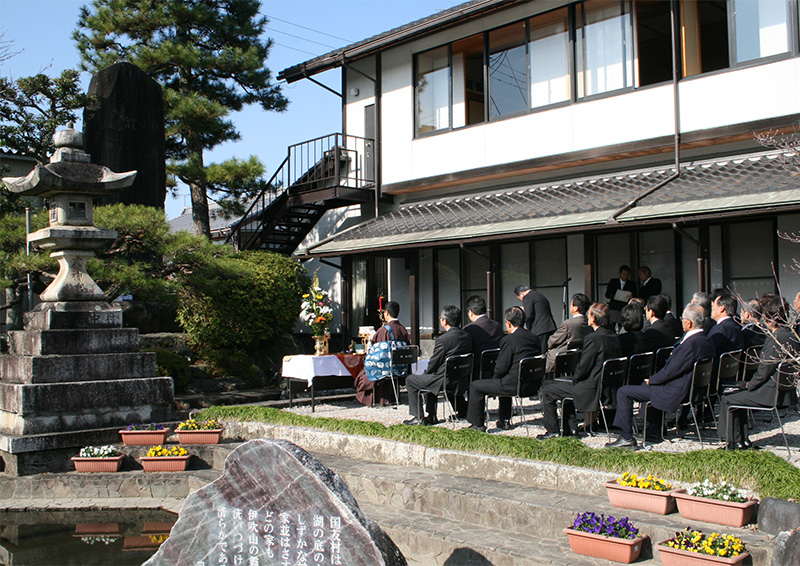 Ikkansai Monument Matsuri held every year on the first Sunday in December
Ikkansai Monument Matsuri held every year on the first Sunday in December-
On December 3rd, 1840 Ikkansai passed away at 63 years of age. His creative genius in science as well as technology continue to shine even today. However, in those times there was noone in Omi Kunitomo to succeed him in blacksmithing. Also, there was noone to sponsor him to industrialize his ideas in science and technology.
Therefore, although it is unfortunate, there was noone in the region to inherit his skills. However, he was the person to raise the standard of modern Japanese science and technological prowess and therefore should be known throughout Japan more.
Concerning the use of reference materials
The materials that are publicized in the Ikkansai Kunitomo Document Index may be used for research purposes.
-
Technological Prowess and Life
An introduction to Ikkansai’s upbringing and works throughout his life.
-
Timeline
A chronology of Ikkansai’s life.
-
Historical Document Research
A two year project funded by Nagahama city to research distinctive culture for regional revitalization.
-
Ikkansai Kunitomo Document Index
Documents currently under examination and organization. The latest findings are posted.
-
Important Documents
An introduction to the many inventions that Ikkansai envisioned.
-
Request reference material
The materials that are publicized in the Ikkansai Kunitomo Document Index may be used for research purposes.
© 2025 Kunitomo Gun Museum

